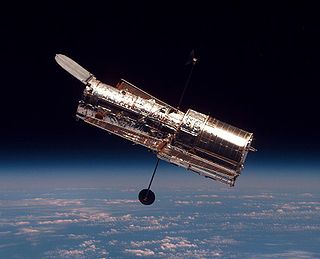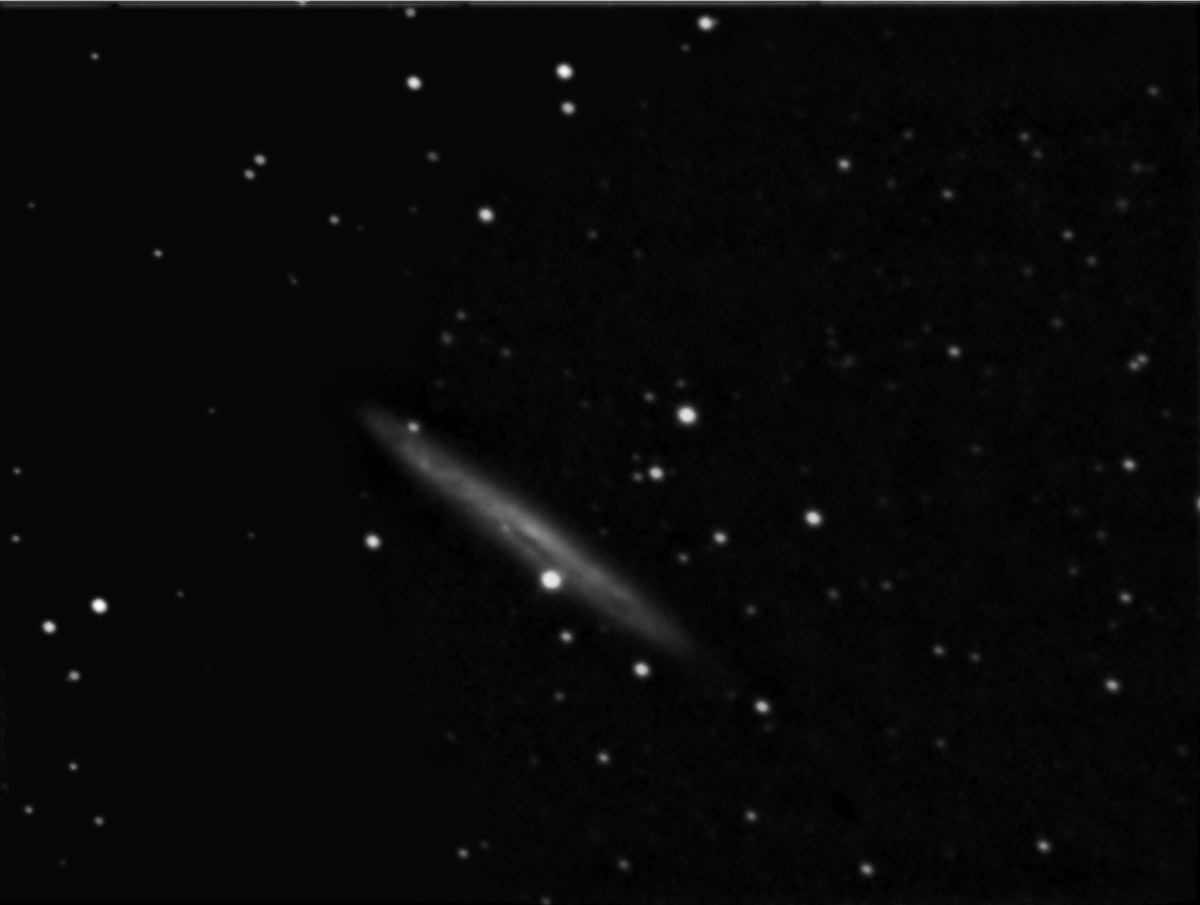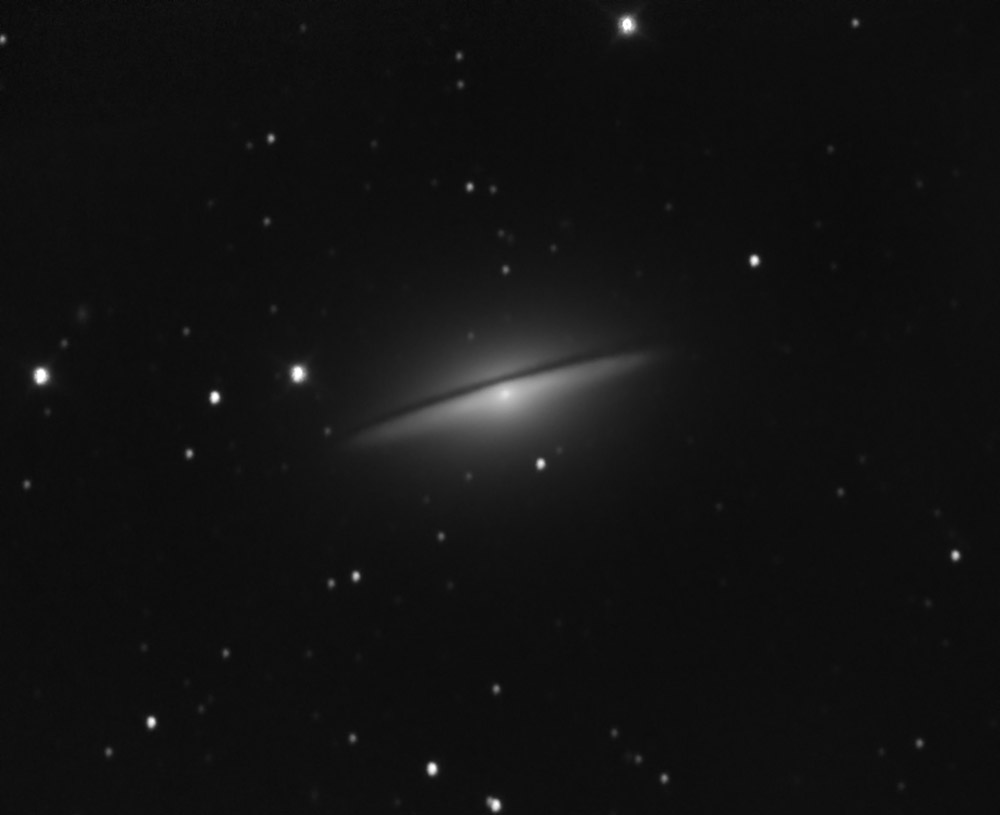Long time readers of this blog will know that from time to time I’ve used remote telescopes for imaging. On occasion, it may be the only way to photograph a particular target e.g. southern hemisphere, or it may provide access to equipment that is out of reach financially or just wouldn’t be practicable to implement at home. I know that this causes problems for some amateur astronomers who may feel that you can’t take ownership of an image if you can’t claim every stage of the process as your own, including actual possession of the equipment used. I take a wider view in that, provided you have identified the sources used, no one is being misled as to the provenance of the images. The individual astronomer still has an input in the collation and presentation of the data.
While attending a meeting of the Webb Society at the Cambridge Institute of Astronomy my eye was caught by one of the pictures on display, an image of a gravitational lens. Such objects were predicted by Albert Einstein and are formed when light from a distant object is bent (or lensed) by gravity around a massive foreground object. In this case the foreground object is a Luminous Red Galaxy (LRG 3-757) and the source is a star forming galaxy. The ring has a diameter of 10″, the LRG has a redshift of 0.44 (or 4.5 billion light years) and the source galaxy has a redshift of 2.379 (10.8 billion light years). Both components are approximately magnitude 20. For anyone interested in the detail the Astrophysical Journal paper is available here. Once home, I did some initial research on this object and went looking for images.
Some time ago I’d become aware of the Hubble Legacy Archive but not had the time to take a detailed look at it. A recent Sky & Telescope article by Robert Gendler rekindled my interest and having found the RA and DEC coordinates for LRG 3-757 I entered them into the search engine on the site (http://hla.stsci.edu). This returned a list of images in the archive for this object and three looked suitable for a colour image; 475nm, 606nm & 814nm corresponding to blue, green and red wavelengths.
Downloading this dataset took some time (each image was 300MB) and each was stretched in FITS Liberator before colour combining using Maxim DL. Once the colour balance looked roughly right I exported the tiff file into Photoshop for fine tuning and noise reduction.
The result is here:
 Is this the ultimate in remote imaging? Well, I’ve finally got access to a telescope that’s unaffected by clouds and atmosphere & cost billions of dollars to build, commission and service. It seems a waste not to make full use of it.
Is this the ultimate in remote imaging? Well, I’ve finally got access to a telescope that’s unaffected by clouds and atmosphere & cost billions of dollars to build, commission and service. It seems a waste not to make full use of it.












